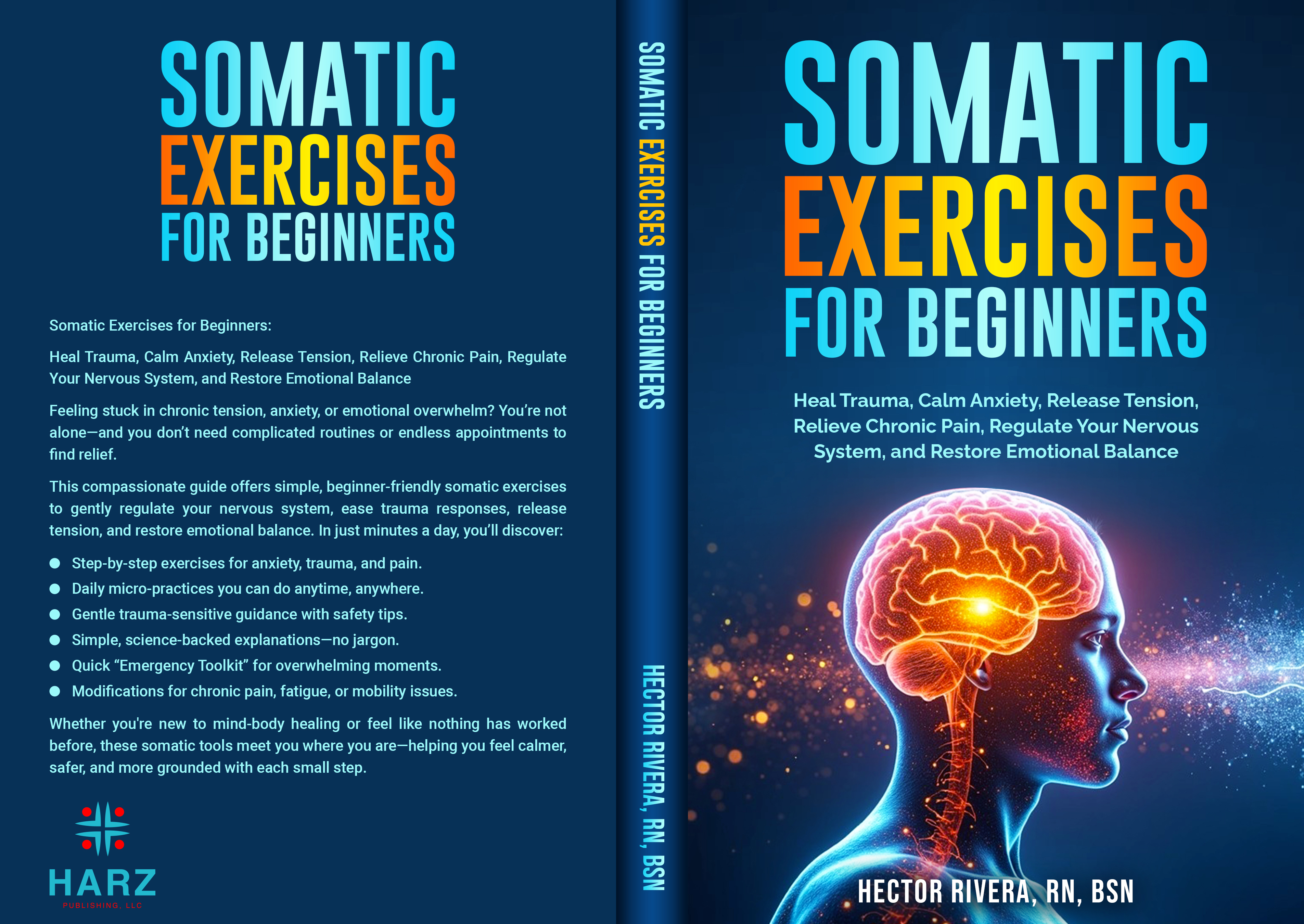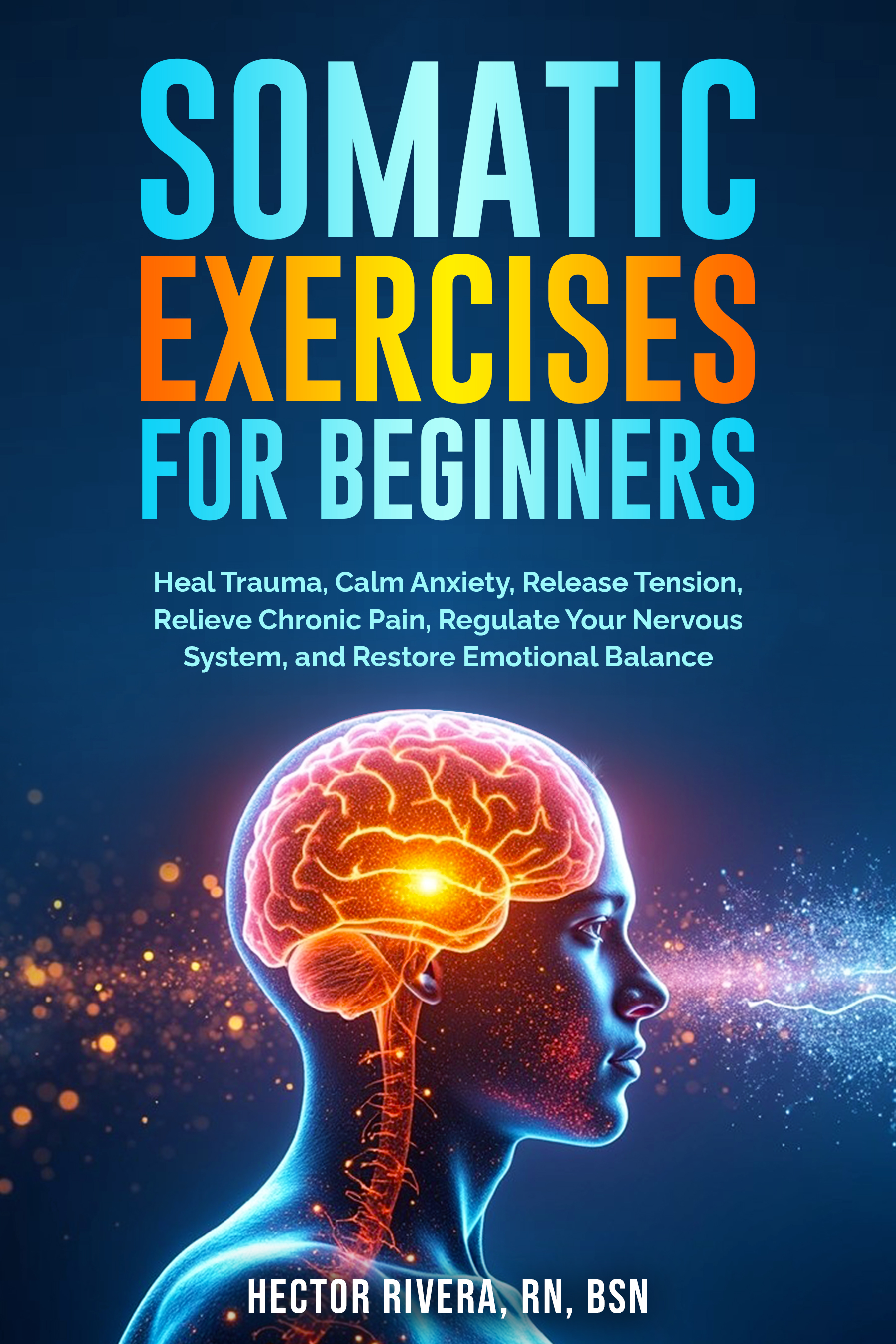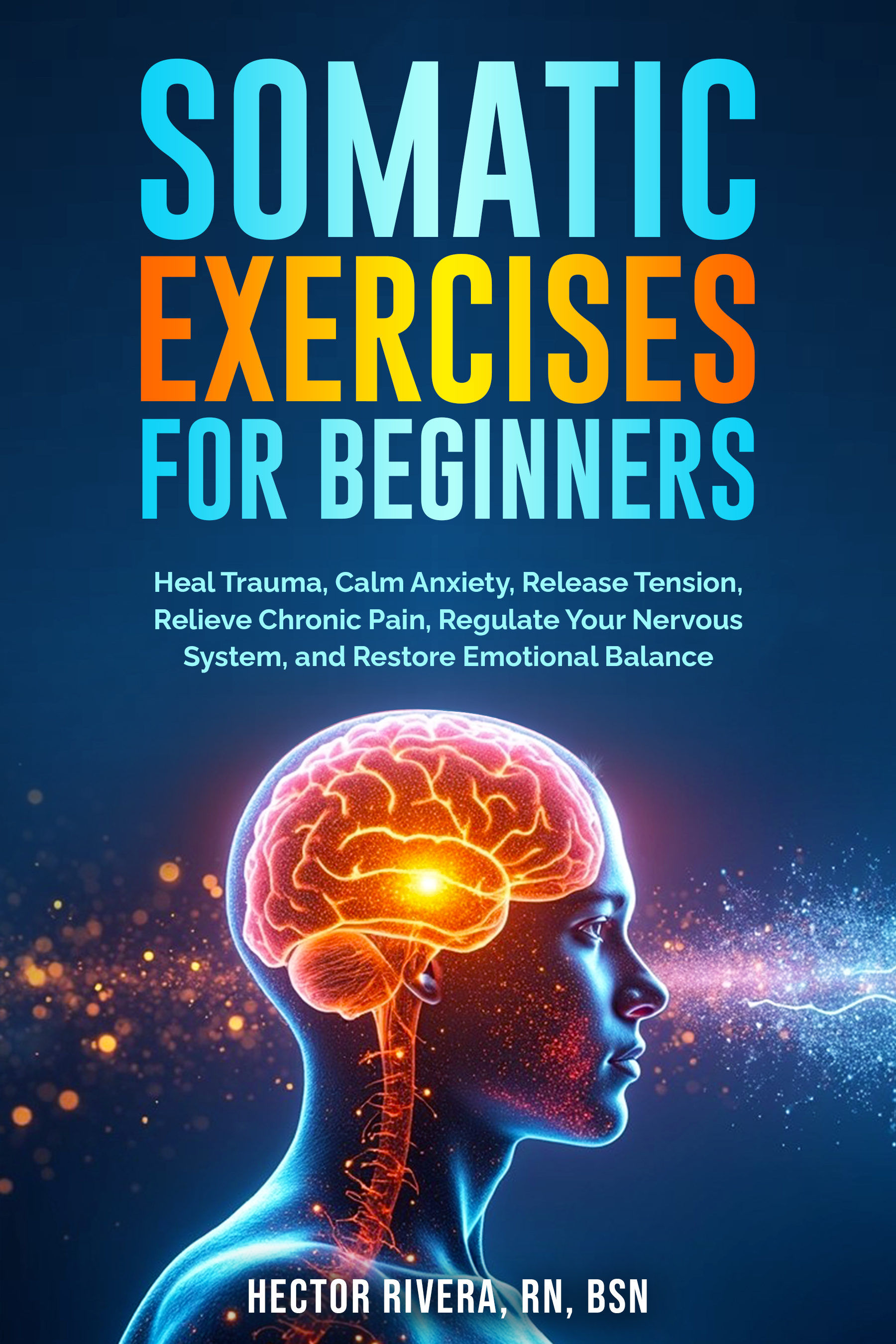Somatic Exercises for Beginners

Somatic Exercises for Beginners
When I began exploring body-based healing, I wasn’t searching for something complicated or trendy. I wanted something that worked—something I could turn to when my body felt tense, my mind wouldn’t settle, and my chest carried that familiar weight of anxiety. That search led me to somatic therapy and eventually inspired me to write Somatic Exercises for Beginners.
This book is rooted in years of hands-on experience—both as a nurse and as someone who has faced anxiety, burnout, and stress that didn’t disappear after a weekend of rest. I’ve seen how the body holds on to tension, even when the mind insists it has moved on. I’ve also seen the relief that comes when we give the body simple, safe ways to release that tension.
Why I Wrote This Book
Throughout my decades in healthcare, I have noticed a pattern: patients who learn to tune in to their bodies often heal better—physically and emotionally. The body constantly communicates with us through sensation. Still, most of us learn to ignore it until it shouts through pain, illness, or overwhelm. Somatic exercises help you listen earlier, respond sooner, and create space for your nervous system to find balance.
I didn’t want to write a textbook. I wanted something you could pick up and use right away—whether you’re at home, on a break at work, or sitting in your car after a stressful meeting. I wanted it to feel practical, approachable, and free from pressure. I designed it so someone brand new to this work could benefit, while still offering fresh insight for those who have tried other methods without lasting results.
What’s Inside
Somatic Exercises for Beginners guides you through gentle, practical ways to reconnect with your body and release stored stress. You’ll find short, adaptable practices that don’t require special equipment or a lot of space. Inside, you’ll learn how to:
- Use breath to regulate your nervous system.
- Notice areas of tension and ease them without strain.
- Create a greater sense of safety and stability in your own body.
- Shift from racing thoughts to a grounded state.
- Recognize early stress signals before they escalate into something more significant.
Each exercise is broken down into clear, easy-to-follow steps. I show you how to adjust the movements or positions to match your comfort level. You won’t find strict routines or demands for perfection.

Who It’s For
This book is for anyone who:
- Feels stuck in a cycle of stress or anxiety.
- Wants to feel calmer and more present in daily life.
- Has tried talk therapy, meditation, or wellness programs but still feels something is missing.
- Curious about somatic treatment and looking for a simple and safe place to start.
The exercises fit into real life. You can do them in two minutes at your desk or take twenty minutes before bed. You can use them in moments of calm or during a stressful day.
My Approach
I write the way I would explain things to a friend—, simply, and without unnecessary complexity. You’ll find a mix of personal experience, professional understanding, and straightforward instruction. My goal is to provide you with tools that you can use the moment you read them.
I also share parts of my journey. These are the same practices I turn to when my mind feels unsettled or my body feels weighed down by stress. They’ve helped me through moments when nothing else seemed to work.
Why It Works
Somatic exercises help you retrain your nervous system to return to balance more easily. They’re not about ignoring stress or pushing through discomfort—they’re about teaching your body that it’s safe to relax, even when life is challenging. Over time, these practices can help you recover from stress faster, sleep more deeply, and feel more resilient.
An Invitation to Start
If you’ve been feeling disconnected from yourself, or if you’ve been searching for something that feels doable and effective, this book is a place to begin. You don’t need special equipment, a private space, or long stretches of free time. All you need is a willingness to listen to your body and try small, intentional steps.
Many readers start with a single exercise and notice subtle shifts within days. Others keep the book nearby and open it to whatever practice fits their mood or situation. There’s no wrong way to use it.
Why Now
Stress rarely arrives at a convenient time. It builds slowly, often without us realizing how much we’re carrying. Starting now—before the weight feels unbearable—gives your body the chance to release and recover.
The sooner you start, the sooner you’ll have tools you can turn to whenever you need them. These practices are there for you in moments of overwhelm, but they’re just as valuable when life feels steady and you want to stay that way.
I’ve seen these exercises change people’s lives, and I’ve seen them make a difference in my own. That’s why I poured so much care into this book. It’s not about perfection—it’s about creating a relationship with your body that supports you for the long haul.
If you’re ready to reconnect with yourself, ease the tension you’ve been holding, and give your body the attention it deserves. In that case, I invite you to read Somatic Exercises for Beginners. It’s a guide you can use for years, and I believe it can start making a difference from the very first page.

The Journey That Led Me to Somatic Healing
If you’ve ever wondered why I’m so passionate about this work, the answer lies in my history. Long before I became a nurse or wrote Somatic Exercises for Beginners, I lived through a childhood filled with experiences that left deep emotional marks. Those early years were full of situations no child should have to face—events that shaped how I saw the world and how my body carried stress for decades.
I tell that story in my first two books, Perched on the Rooftop and The Guardian in the Corner. I base both on actual events from my life, writing them exactly as I remember. They hold mystery and ghostly encounters, but at their core, they show survival, resilience, and the pursuit of peace.
Writing them was my way of processing what happened and making sense of the fear, uncertainty, and trauma I carried from childhood into adulthood. Those experiences were what pushed me to explore new ways of healing—eventually leading me to somatic therapy, where I learned how the body holds on to the past and how gentle, mindful movement can help release it.
If you’d like to understand the deeper story behind why I wrote Somatic Exercises for Beginners. In that case, I invite you to read at least my first book, Perched on the Rooftop. The books share the journey that brought me to this work, and they might offer insight into your path toward healing.
Sources
- The Body Keeps the Score – Bessel van der Kolk, M.D.
- Waking the Tiger: Healing Trauma – Peter Levine, Ph.D.
- In an Unspoken Voice: How the Body Releases Trauma and Restores Goodness – Peter Levine, Ph.D.
- Trauma and Memory – Peter Levine, Ph.D.
- The Polyvagal Theory – Stephen W. Porges, Ph.D.
- American Psychological Association – Somatic Therapy Overview
- National Library of Medicine (PubMed) – Research on somatic and body-based therapies
Medical Disclaimer: The information on this website is for educational purposes only and is not a substitute for professional medical advice, diagnosis, or treatment. Always consult a qualified healthcare provider with any questions you may have about your health or a medical condition. Never ignore professional medical advice or delay seeking it because of something you have read here.

